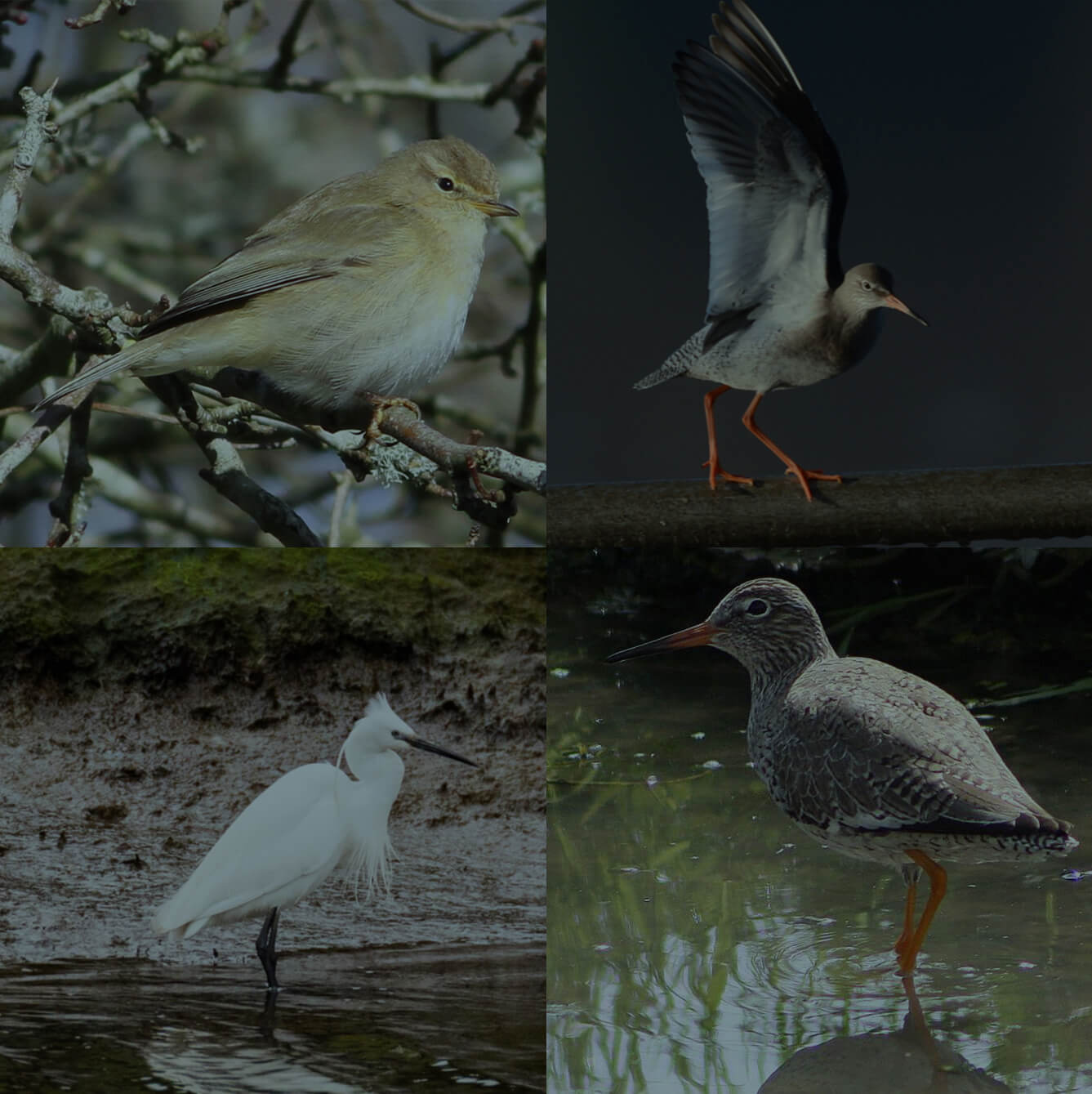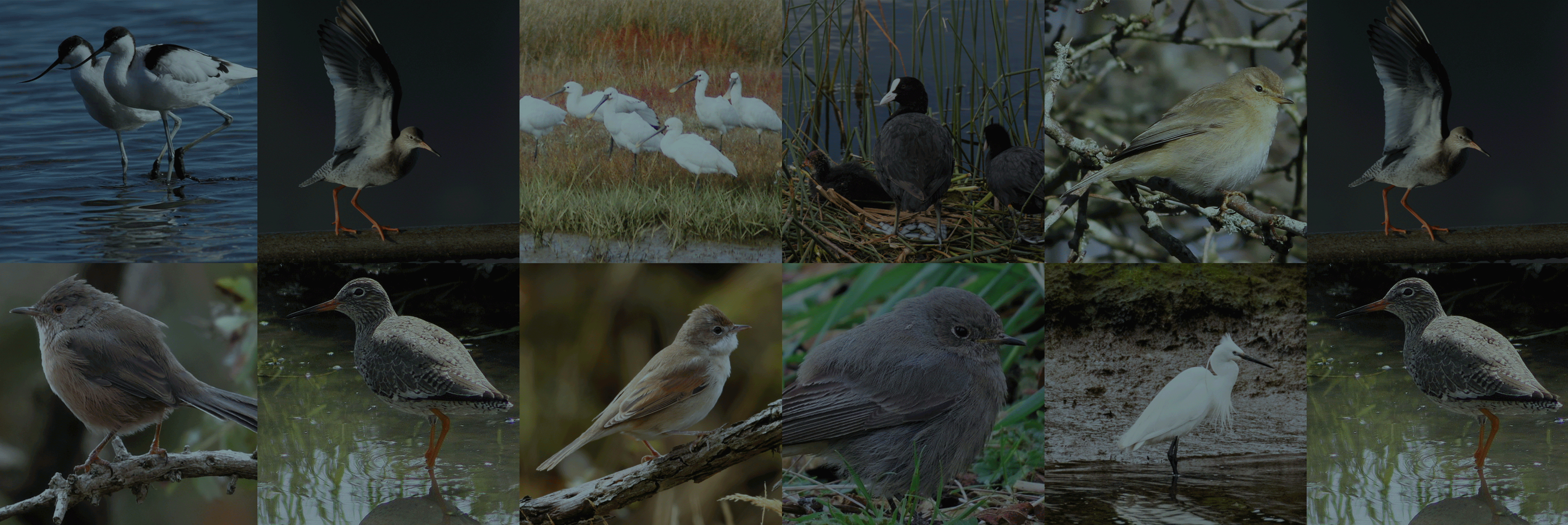An official account of all species that have been recorded and reported by birdwatchers and naturalists in the Poole Harbour area since records began.
The data for this list has been extracted from various sources, but George Greens 'The Birds of Dorset', Mansel-Pleydell's Birds of Dorsetshire, Naylor’s reference manual of rare birds and the back catalogue of Dorset bird reports have provided most information. Data is currently still being researched and records will be updated accordingly.
You can view this information in two different ways. Our alphabetical list provides information on the status of each species within the harbour, finder dates and names, photos and favoured locations. By clicking on the Systematic List button you will be presented the full Poole Harbour systematic list which includes status of species, pending records and historical accounts.
To date, 333 species have occurred and have been accepted within the Birds of Poole Harbour boundaries. A further 11 distinct subspecies have also been seen. In addition, we have two species/subspecies which have been recorded, but are awaiting acceptance by the appropriate records panel.
There are a handful of historical records, for which there is currently insufficient information to allow their inclusion onto the Poole Harbour list, but are believed to be genuine records. They are listed at the end of the list.
Finally, there are a number of feral or escaped species that have been recorded within the Birds of Poole Harbour boundaries. They are included for completeness, but are not included on the Poole Harbour list.
We would be interested in hearing details of any species that do not appeared on this list.
The Birds of Poole Harbour systematic list is a PDF which you can view by clicking on the button below. It was last updated on December 2019.
Full Poole Harbour Systematic List
Black-headed Gull
Latin Name
Chroicocephalus ridibundus
Status
Resident
Site And Records Information
Probably one of the most numerous birds in the harbour. Can be encountered on any habitat at any time of year. There is a large breeding colony of c6000 pairs off the Holton shore which it shares with 120+ pairs of Med Gull. Sadly the colonies of Little sea, Studland and Holes Bay are long gone due to the erosion of the spartine marsh they used to nest on.
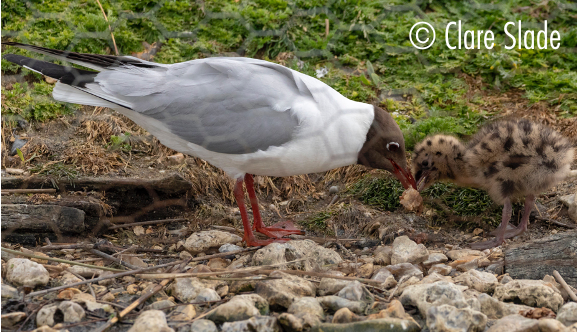
Black-necked Grebe
Latin Name
Podiceps nigricollis
Status
Winter Visitor
Site And Records Information
Poole Harbour hosts nationally important numbers of this species. By far the best place to watch is Studland Bay and Shell Bay with a max count of 81 during the winter of 2010/11. It’s often the most important wintering site in UK. Small groups do move in to the harbour, with the body of water between Brands Bay and Brownsea worth checking as birds swim into roost in the evenings as well as smaller groups out in central harbour that often join the grebe and duck roost off Round Island. The earliest was off Shipstal Point on 16th August 1999 and the latest was on the 3rd May 1992 at Arne.
Birds are most numerous in February when its assumed that numbers are boosted by migrant birds moving north. A major oiling incident in the harbour in 1964 halved the wintering population. A partial recovery occurred in the 80’s and 90’s with a high count of 30 in Studland Bay 8th Feb 1997. Three died and two more were oiled as a result of the 1964 collision.
Recent ‘obscure’ records include 1 on Poole Park boating lake in April 2018, 1 in Lytchett Bay on 29th Dec 2019 and 4 summer plumaged individuals in the Wareham Channel in April 2018 suggesting they were staging migrants passing through the harbour.
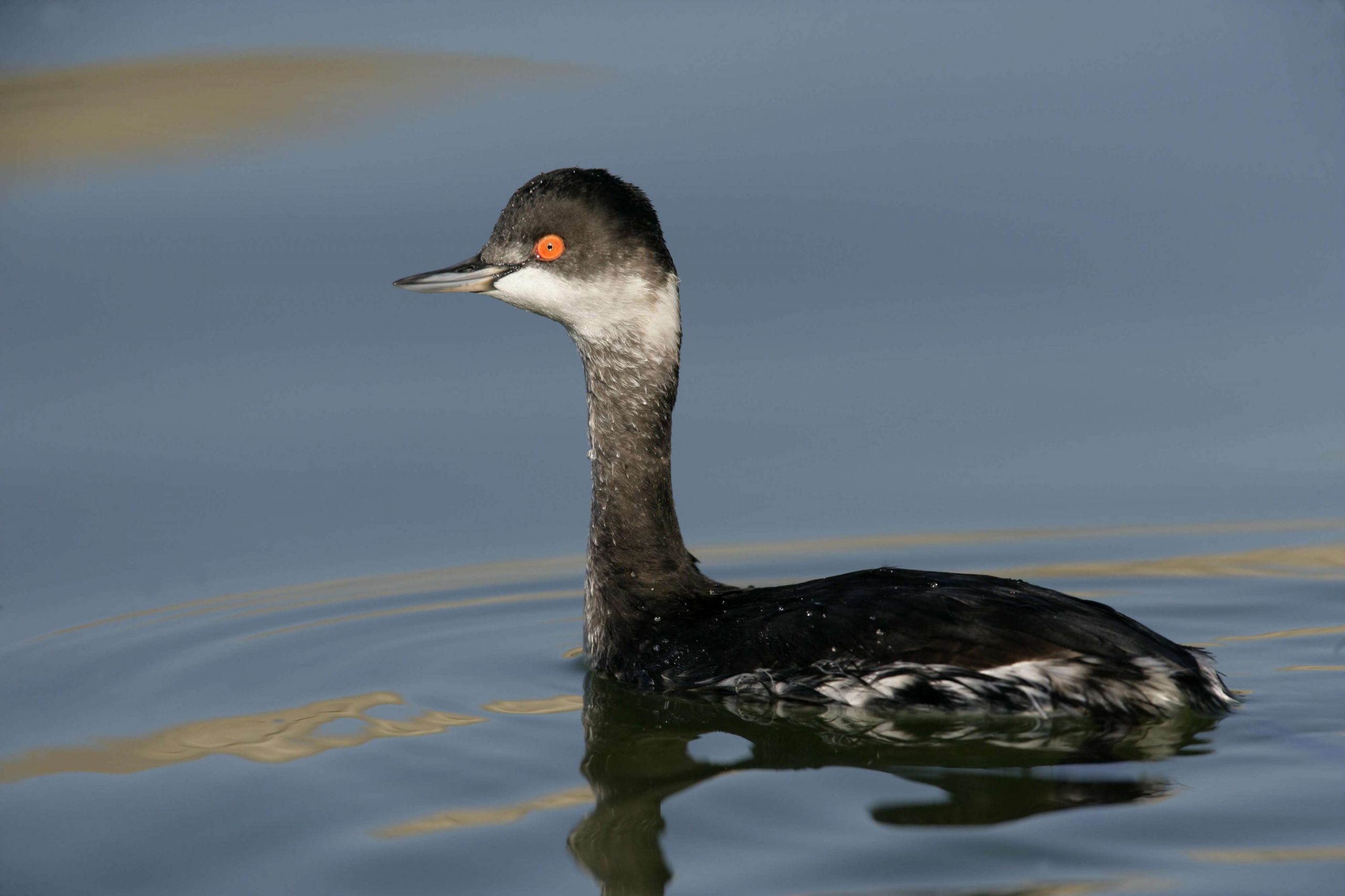
Black-tailed Godwit
Latin Name
Limosa limosa islandica
Status
Resident
Site And Records Information
Poole Harbour is an internationally important site for Black-tailed Godwit. With harbour counts exceeding 2000 it makes them an easily seeable bird in many of the bays and water meadows. Middlebere holds around 300-400 mid winter as does the Brownsea lagoon. Other large flocks can be found in Brands Bay, Lytchett Bay, Holes Bay and Arne Bay. Also found on the water meadows and fields of Bestwall and Swineham all the way up to East Stoke ! There is a regular small flock of summering birds now.
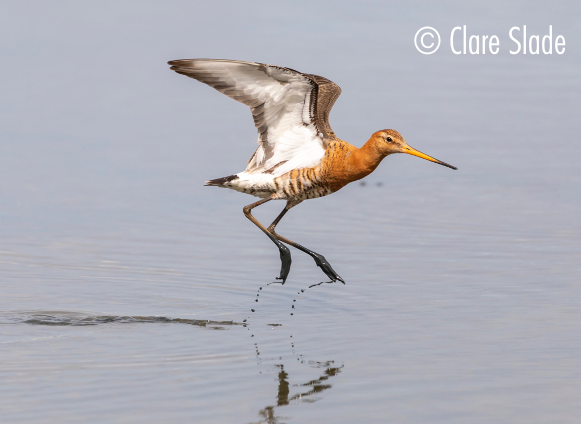
Black-throated Diver
Latin Name
Gavia arctica
Status
Scarce Winter Visitor
Site And Records Information
The least common of the three (main) diver species, they can arrive and spend time in the bays outside the harbour mouth during the winter. They are scarcely recorded in the inner harbour apart from their favourite over-wintering zone seems to be the north channel off Evening Hill and Salterns Marina. In winter can be also be found fishing off Sandbanks just outside the harbour mouth and into Studland Bay, with a maximum of 8 in Poole Bay 7th January 1989. Mainly recorded past Branksome Chine during winter sea watches.
Unseasonal records include individuals on 31st July 1978 and 13th June 1984. One also summered in Poole Bay in 2000 and was present from June to September seen mainly off Branksome Chine.
One on Hatch Pond 21-23 January 1995 was a noteworthy inland record.
Black-winged Stilt
Latin Name
Himantopus himantopus
Status
Vagrant
Site And Records Information
The pattern of occurrence is interesting for Dorset. There are 2 records from the 19th century. Next there were 3 records between 1956 and 1960. 25 years passed before the next (1985) but there were a further 5 by 1990. Another 21 years (2011) passed before the County then enjoyed another 6 records up to the end 2014. There are currently 4 Poole Harbour records…..
1 on 3rd Aug – 6th Sep 1960 at Wareham sewage works found by Helen Brotherton, J Follett and P Partington
1 on 7th Jun 1978 on Brownsea Lagoon
2 on 12th-13th Apr 2014 on flooded fields at Swineham/Bestwall (P.Morton et al)
3 from 21st – 25th May 2014 at Lytchett Fields (I.Ballam et al)
1 on 11th -14th May 2016 at Lytchett Fields (D.Jones et al)
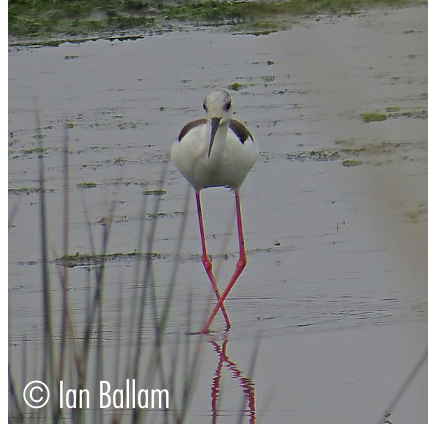
Blackbird
Latin Name
Turdus merula
Status
Resident
Site And Records Information
Common throughout the harbour with numbers rising especially during autumn migration and hard weather. In late October many hundreds (sometimes thousands) can be heard migrating overhead in the darkness in the company of Redwing and Fieldfare. South Haven is a good spot to watch migrating Blackbirds.
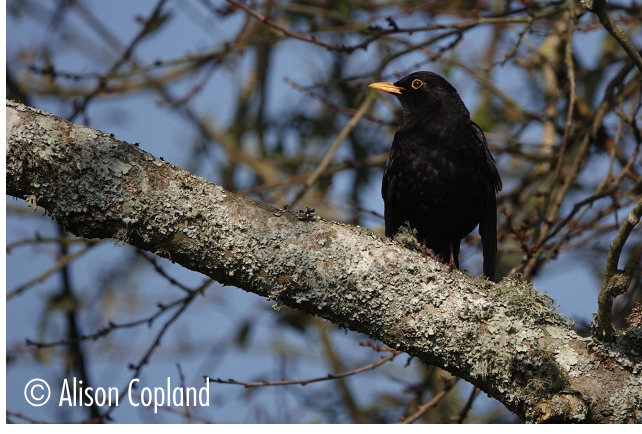
Blackcap
Latin Name
Sylvia atricapilla
Status
Resident
Site And Records Information
Territories are found throughout the woodland bordering the harbour. Poole Park, Upton Country Park, Lytchett Bay, Arne and Studland are regular spots with passage birds flooding through the area in September and October. Regular on migration in scrubby habitats like Ballard, Middlebere, Lytchett Bay, Greenlands Farm and good numbers in the PC World drain during September and October.
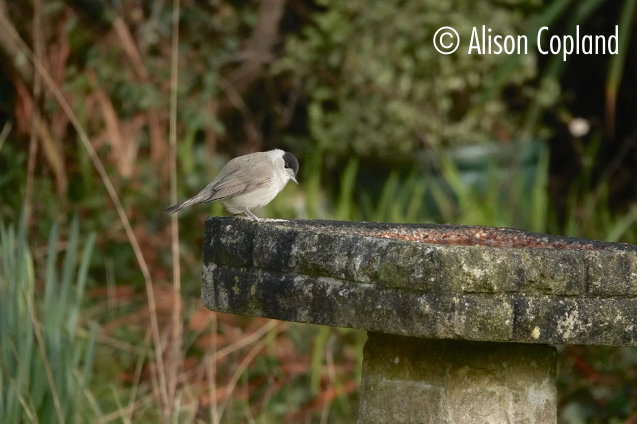
Blue Tit
Latin Name
Cyanistes caeruleus
Status
Resident
Site And Records Information
Found in gardens, parks, woodland, urban and rural areas across the harbour. Common but very very beautiful.
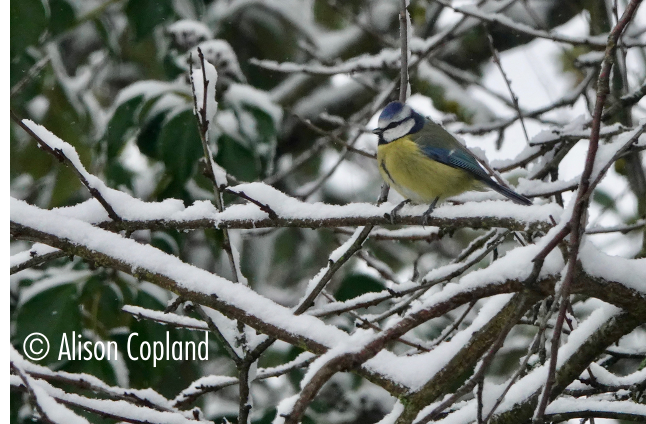
Blue-headed Wagtail
Latin Name
Motacilla flava flava
Status
Scarce Passage Migrant
Site And Records Information
The first Poole Harbour record came from Wareham in on 4th June 1903. It has always been rare and this is demonstrated by the fact that there have only been 4 recent records.
A male on 25th April 1999 at Ballard Down (T Elborn)
A male on 25th April 2013 at Lytchett Bay (S Robson)
A male on 27th April 2013 at Holton Lee (N Hopper)
A female on 22nd April 2014 at Lytchett Bay (I Ballam)
Bluethroat
Latin Name
Luscinia svecica
Status
Vagrant
Site And Records Information
This is a scarce species in Dorset, it does not occur annually. All of the Poole Harbour records are believed to refer to the red-spotted race L.s.svecica. In recent years, early spring influxes of the white-spotted race L.s.cycanecula have occurred, particularly around Portland. The first of these for Poole Harbour is a very realistic prize for local rarity searchers.
1 on 22nd Sep 1960 at Baiter Point
1 on 13th Apr 1968 in Serpentine Road, Poole
1 from 26th to 29th Sep 1971 in the north-west corner of Lytchett Bay
1 (male) on 14th Oct 1984 at Little Sea, Studland
1 on 29th May 1989 at Arne
1 trapped and ringed on 27th Aug 1993 at Keysworth (R.Gifford)
1 trapped and ringed on 29th Aug 2015 at Lytchett Fields, Lytchett Bay (R.Gifford et al)
Bonaparte’s Gull
Latin Name
Chroicocephalus philadelphia
Status
Vagrant
Site And Records Information
One at Brownsea Island was re-identified several hours later from a photograph taken on the afternoon of 30th July 2017 (per Rare Bird Alert). Thankfully it was still present the following morning when it was found feeding on the lagoon (N.Hopper et al). It was still present at the time of writing (2nd Aug) and is thought to have been a 2nd calendar year bird.
1 between 30th Jul and 31st Aug 2017 on the Brownsea Lagoon (L Bissell, N.Hopper et al).
Bonelli’s Warbler sp.
Latin Name
Phylloscopus sp.
Status
Vagrant
Site And Records Information
Bonelli’s Warbler was split into two species in 1997. Western Bonelli’s P.bonelli and Eastern Bonelli’s or Balkan Warbler P. orientalis. Separation of the two species in the field is difficult and relies largely on differences in call. Consequently records of each and “either or’s” are considered by BBRC.
To the end of 2015 there have been 7 Western’s, only one of the much rarer Eastern and 3 Bonelli’s Sp in Dorset.
A Bonelli’s Warbler Sp on 19th Aug 1974 at Brownsea Island. It has not been possible to identify this bird to one of the “new” species.
Brambling
Latin Name
Fringilla montifringilla
Status
Passage Migrant & Winter Visitor
Site And Records Information
No longer a guaranteed over winterer but definitely a regular passage migrant in October and early November again from ‘Vis Mig’ sites like South Haven, Ballard and Glebelands. Quite often found in amongst over wintering Chaffinch flocks at sites like Arne, Middlebere and Greenlands Farm. An impressive 300-500 birds over wintered at Arne in 2003/04.
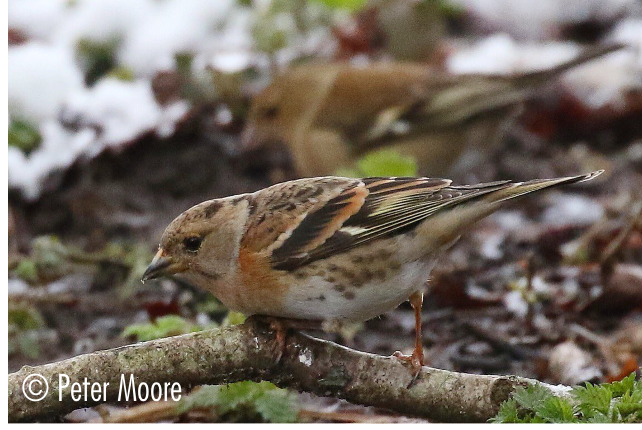
Buff-breasted Sandpiper
Latin Name
Tryngites subruficollis
Status
Vagrant
Site And Records Information
A rare transatlantic vagrant which would normally be looked for in autumn, but with only two Poole Harbour records, one of which being in mid June, it just goes to show you should be prepared to see/find odd birds at odd times of years in odd places.
1 on 12th Sep 2011 on Brownsea Lagoon (N.Hopper)
1 on 15th June 2017 on Lytchett Fields (I.Ballam)
Bullfinch
Latin Name
Pyrrhula pyrrhula
Status
Resident
Site And Records Information
Breeds in urban and rural areas of the harbour favouring areas with thick hedge rows and fruit trees. Frequent at Upton House, Lytchett Bay, Holton Lee, Studland and Swineham. Movements and birds in odd places are also detected at times of passage and are usually mainly local birds dispersing, however in some years genuine migration does occur. This was most noticeable in 1987 when a flock of 40-60 birds were recorded at Studland coinciding with an autumn influx of birds into the county the previous October. Other notable counts have been 30 at Parkstone in Dec 1974 and 40 at Holton Heath on 18th Nov 1984.
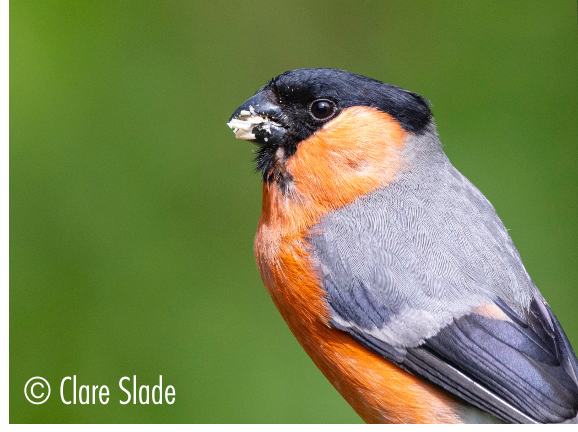
Buzzard
Latin Name
Buteo buteo
Status
Resident
Site And Records Information
Buzzards are commonly seen and heard all around the harbour area. They are most likely to be seen over the farmland, wetlands, the heaths and the conifer plantations but can appear even above urban conurbations to the north and east, perhaps thermalling individually or in groups on warm days or in transit low over the roofs.
Tony Wise said “apparently bred on Brownsea in the 1950’s.” In 1967 F R Clafton wrote excitedly in the Bird Report “In the Rempstone area near Corfe Castle, S P W Corbett thought a pair were possibly nesting and Elizabeth Ollivant reported frequent sightings at nearby Bushey”
During spring up to 20 Buzzards may be seen soaring over open areas from a high vantage point and display often then occurs over suitable nesting sites. They become less conspicuous during the nesting season though can still be encountered soaring singly or carrying prey to young in the nest. In late summer and autumn juveniles can be located by their loud food-soliciting squeals. In winter, the species is often seen on roadside perches such as telegraph poles, presumably waiting for road kill. They also ‘worm’ in fields for long periods during the winter.
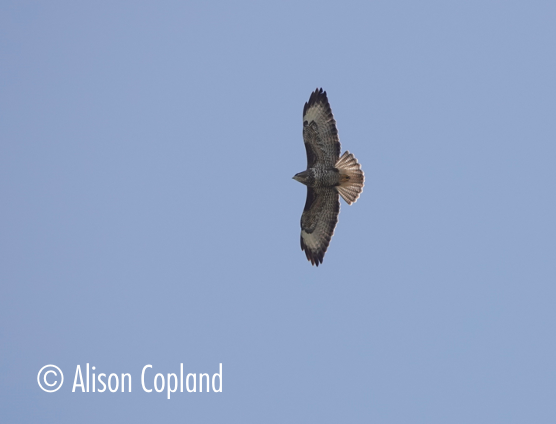
Canada Goose
Latin Name
Branta canadensis
Status
Resident
Site And Records Information
This regular breeding bird first turned up in 1954 when one was shot at Sandbanks on the 2nd October. In June 1957 ten pairs were introduced to Poole Park by wildfowlers, followed by more in 1959 and by 1960 there were around 70 in Poole harbour. Brownsea was the main breeding area with with 66 pairs in 2001 and 57 pairs in 2004. They also breed at Arne, Brands Bay, Green Island and Little Sea. Large numbers also congregate on the lawns of Poole Park where they are regarded by many as pests, chasing unsuspecting locals feeding the ducks. Occasionally they are cause of a council cull debate, normally in relation to the mess they make around Poole Park where they chase unsuspecting locals feeding the ducks and roost at night.
Large numbers feed on the fields along Ballard and they fly from Poole Park back and forth across the harbour mouth and along the coast. There were at 500 Ballard Down 16th Sept 1988. They also feed at Arne, Greenlands Farm, Middlebere and around the house at North Bestwall Park. Numbers normally peak in August when there is a large moulting flock around Swineham and Arne. In late 2019 a large group of 500+ visited Upton Country Park every morning, arriving in from an unknown roosting area north of the harbour. Shooting of Canada Geese still occurs in the harbour.
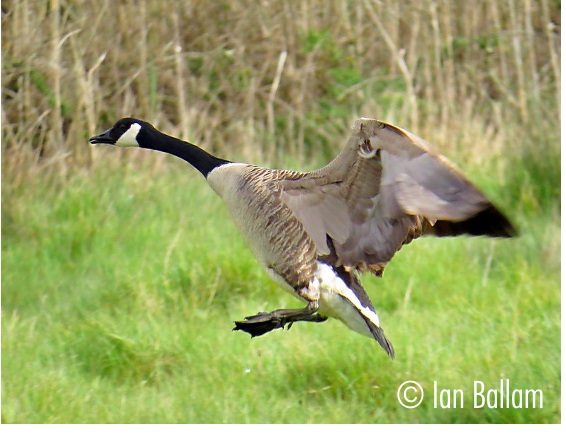
Carrion Crow
Latin Name
Corvus corone
Status
Resident
Site And Records Information
Found right across the harbour in rural areas. Winter flocks of up to 600 birds have been observed. ‘Fishing’ Carrion Crows can be observed along the Baiter car park in autumn and winter, picking up cockles and whelks before dropping them on to the hard tarmac, a behaviour we probably haven’t seen in the harbour for almost 200 years since corvids were heavily persecuted.
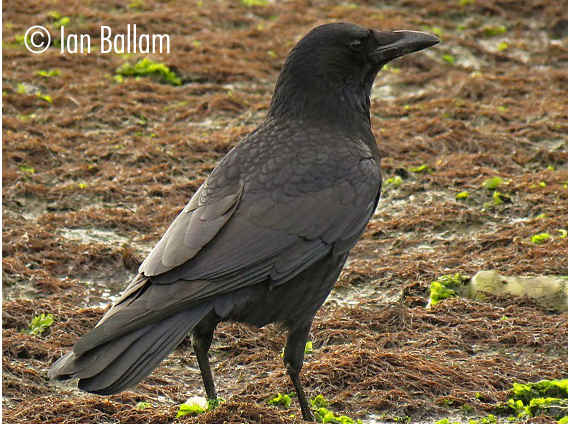
Caspian Gull
Latin Name
Larus cachinnans
Status
Vagrant
Site And Records Information
A rare but increasing visitor to UK shores and inland sites with Dorset sightings rising considerably in recent years. Poole Harbour has only two records but its likely some Caspian Gulls go un-found due to the size of the harbour. Scanning gull flocks during the winter and spring could reward you with a Caspian Gull.
A 1st S was present briefly on 19th Feb 2003 at Corfe Mullen tip (J.Lidster)
A 1st winter in Wareham Channel on 22nd October 2017 (M.Lawson)
A 2cy on 14th Aug 2020 in Brands Bay (D.Mitchell).
A 1cy on 25th Oct 2020 in the Wareham Channel (Phil Goble).
A 1st winter on the Brownsea Lagoon webcam on February 5th 2021 (P.Morton)
A 1cy from Jerry’s Point, Studland, 7th November 2021 (P.Saunders)
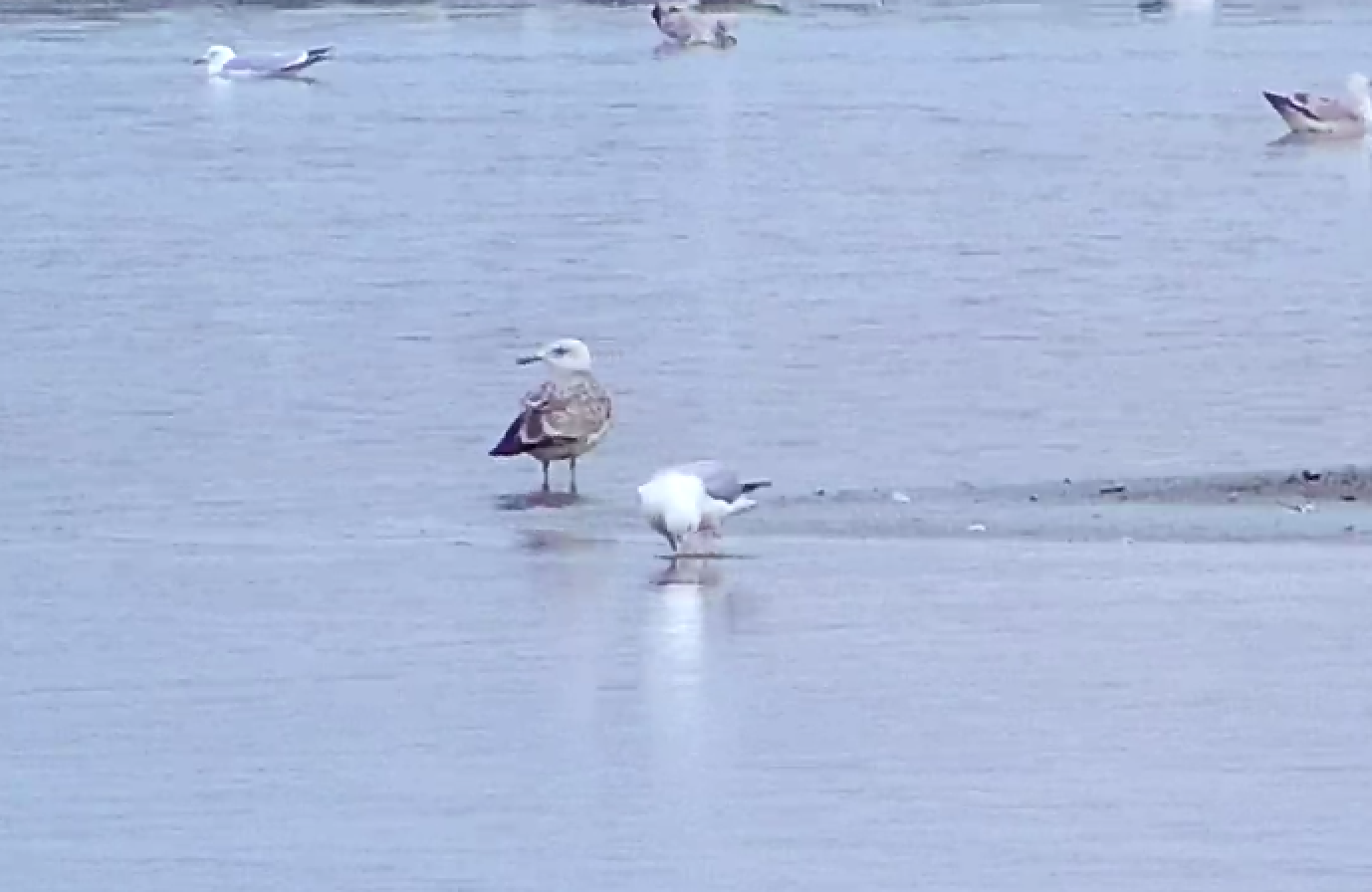
Caspian Tern
Latin Name
Hydroprogne caspia
Status
Vagrant
Site And Records Information
Up to 2022 there have been 20+ Dorset records with only 5 in the harbour and none have stayed long enough to be seen by many birders. News of the next one will have birders dashing to their cars.
1 killed in July 1872 at Wareham
1 on 28th July 1984 off Brownsea Island (M.A.Hallett, R.Newton)
1 on 3rd August 2011 on Brownsea Lagoon (S Holmes et al)
1 on 6th July 2012 on Brownsea Lagoon at dusk. (C.Thain).
1 on 16th July 2022 on Brownsea Lagoon (J.Owen)
Cattle Egret
Latin Name
Bubulcus ibis
Status
Scarce but increasing Visitor
Site And Records Information
This species was rare in Britain and Dorset until 2006. A large influx occurred in late 2007. By 2009 it had been removed from the BBRC list. However the influx was not sustained and there had not been a record in the harbour for more than 3 years (up to Nov 2015). However, a large influx into the UK during 2017/18 saw a colony form on the Somerset Levels and breeding was also confirmed in West Dorset in 2017. Since then numerous records have been obtained from several sites around the harbour with a high count of 7 birds in the Frome Valley in autumn 2018 and by December 2018 a flock of 20 were frequent in the Frome Valley. Late summer/early autumn often see’s ‘new arrivals’ passing through the harbour with multiple birds often counted. Possible breeding was suggested for the harbour area in 2023 with a flock of 7 in mid-July feeding in fields next to Wareham Quay which contained several fresh juveniles.
1 on 26th Aug – 31st Dec 1996 at Ower (N.Symes et al). Also seen at Studland in the roost.
1 ‘summer 1985’ on Wareham Floodplain (Mo Constantine)
1 on 30th Jul 2001 at Middlebere (E.Thorpe et al)
3 on 2nd Nov 2007 at Arne (M.Singleton et al) then Bestwall on 4th – 12th Nov (B.Spencer et al)
4 flew north on 3rd Nov 2007 at Lytchett Bay (M.Gould, S.Robson et al)
1 on 27th Nov – 6th Dec 2007 at Upton Country Park (L.Kirton et al)
1 from 22nd Feb -18th Mar 2008 East Holme Water Meadows (D.Liley et al)
1 on 19th Apr – 1st Jun 2008 at Lytchett Bay (S.Robson et al)
1 on 10th Aug 2008 at Ower (S.Robson, M.Smith) and the at various places in the southern harbour until 27th August (S.W. Smith et al)
1 on 18th Oct – 1st Nov 2008 at Ballard Down (S.W.Smith et al)
1 on 25th Oct 2008 at Lytchett Bay (S.Robson, M.Smith)
1 on 3rd Jan 2009 at East Holme (K.Lane)
1 from 7th Mar 2009, joined by second from 11th Apr, at Wareham Water Meadows (J.Mitchell, I Pillow et al). Also seen Swineham & the Slepe/Arne Heronry. Last seen 9th May. No breeding attempted.
1 on 27th Mar – 8th Apr 2010 at Wareham Water Meadows (J.Mitchell et al)
1 on 20th – 23rd Dec 2011 at East Holme (I.Lewis et al)
1 on 10th – 13th Apr 2012 at Lytchett Bay (P. Morton et al)
Records since the recent national influx
2016
East Holme 1 from 12th-28th Dec (per DBC et al).
2017
Lytchett Bay/Fields 2 on 3rd Apr (S Robson), 1 on 12th May (S Robson), 1 over on 15th May (IM Lewis), 1 on 9th Sep (per M Wood), 1 on 4th Nov (ID Ballam).
Middlebere 8 on 16th Jul, 8 on 16th Aug.
Arne RSPB 3 on 10th Jul.
Arne Moors RSPB 1 from 24th Apr into Jun, also frequenting Bestwall; 1 on 3rd Nov in the Wareham Channel.
Ballard Down 1 on 17th Oct.
East Holme 2 at Holmebridge 10th-12th Apr, 1 at Holme Lane 29th Dec.
Swineham GPs 1 on 13th, 14th & 16th Mar.
Wareham 1 on 26th Apr.
2018
Arne RSPB/Middlebere Single birds on 28th Jun, 1st, 24th, 25th & 31st Jul and 1st Aug.
Bestwall RSPB 6 on 10th Nov, 2 on 15th Nov and 17 on 16th Nov.
East Holme Varying number of birds present on 25 days between 1st Nov and 31st Dec with a peak of 17-20 birds between 23rd Nov and 14th Dec.
Swineham 1 on 1st May, 20 on 5th Nov and 21 on 6th Nov.
Wareham Birds were reported on flood meadows and at Stoborough between 6th Oct and 28th Dec, peaking at 20 on 17th Nov and 18 on 22nd & 26th Nov.
Wareham Channel 1 on 4th May, 1 on 25th Nov, 18 flying up the channel on 14th Dec.
1 or 2 birds were also reported from Brownsea Island (1 on 22nd Jul), Little Sea, Studland (1 in egret roost on 17th Jul), Lytchett Bay (singles on 6th, 19th & 20th Sep with 2 on 8th Sep), Studland village (1 on 9th Feb).
Stoborough 2 in flight on 27th Jan.
Upton Heath 1 in flight on 10th Apr.
Wareham area 1 flew E towards Organford on 25th Feb and 3 W on 18th Apr.
2019
Arne Moors RSPB 6 on 11th Feb, 14 on 25th Apr.
East Holme Present between 2nd Jan and 1st May with a peak of 9 birds on 2nd Mar.
Stoborough Max of 9 birds between 22nd Jan and 22nd Apr.
Swineham GP 4 on 1st Jan, 12 on 24th Apr and 10 on 9th May.
Poole Harbour 3 at Lytchett Bay on 3rd Sep, 4 at Holton Heath on 4th Sep, and singles also seen at Arne Moors RSPB, Stoborough, Swineham GPs and Wareham.
Studland village 3+ on 22nd Dec.
Holmebridge (2nd Dec).
2020
Swineham GPs 3 on 16th Apr.
Wareham Common 4 on 17th Apr.
Arne Moors RSPB 1 on 25th Aug.
Lytchett Bay 1-2 present 13th Jul to 18th Aug with 5 on 9th Aug.
Swineham GP 1 or 2 between 26th Jul and 30th Aug with 6 on 26th Aug.
Arne Moors RSPB 1 on 9th Oct.
Swineham GPs Up to 3 at the GPs or Bestwall RSPB from 6th Sep to 4th Oct.
2021
Lytchett Bay singles on five dates between 1st -12th Jan and on 16th and 28th March. Singles of 27th Sept and 26th Oct.
Swineham GP 1-5 birds present from 8th Feb – 28th April. Max of 6 between 2nd Sept and 21st Oct.
Wareham Common – 4 on 11th Nov, 12 on 15th Nov.
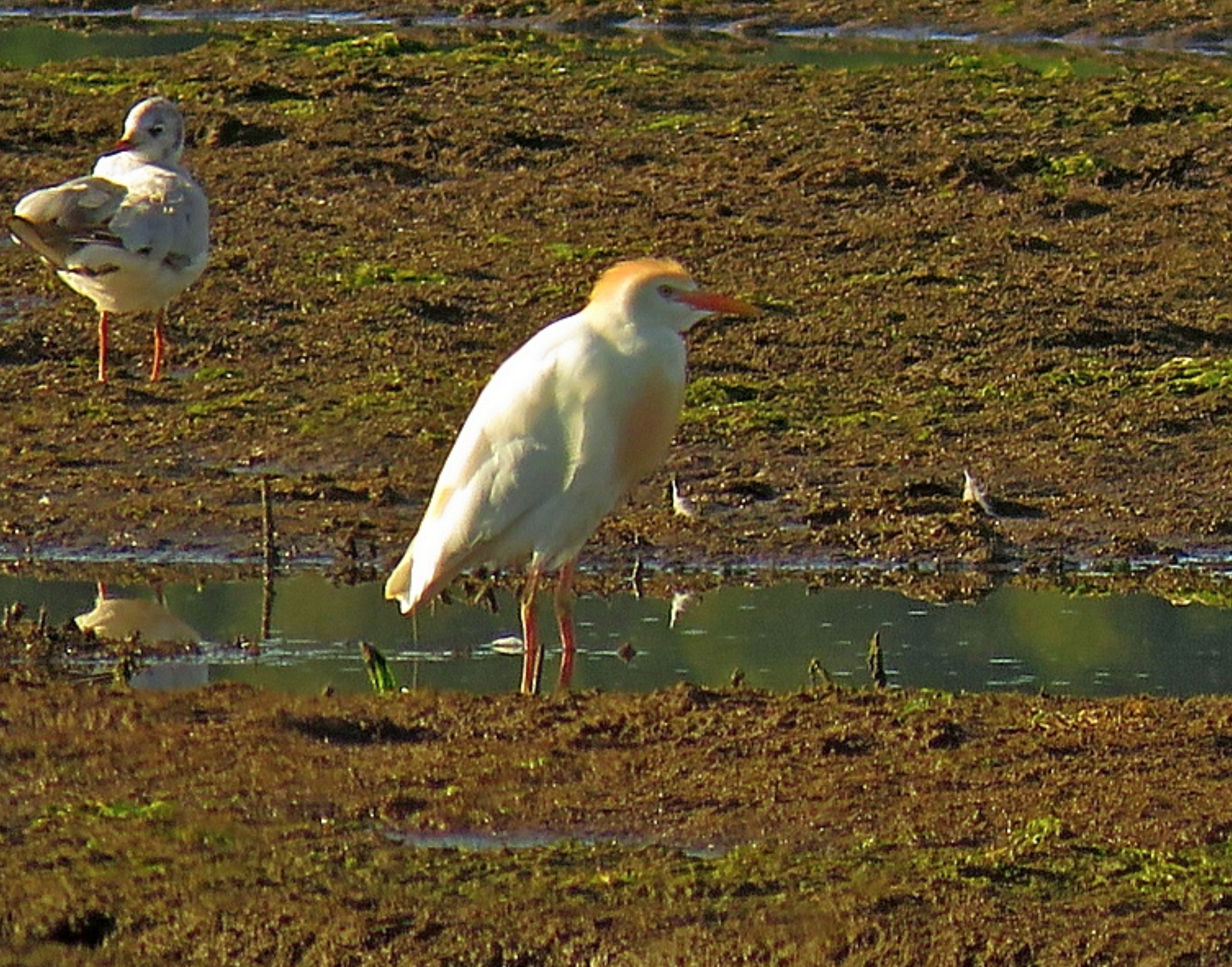
Cetti’s Warbler
Latin Name
Cettia cetti
Status
Resident
Site And Records Information
The first record for the harbour was a spring bird on Brownsea in April 1976 which was actually rejected by BBRC. Swineham, Lytchett Bay and Keysworth host breeding birds now and a third of Dorsets breeding birds are in Poole harbour. Listen out for their explosive song along the river banks of the Frome in April and May.
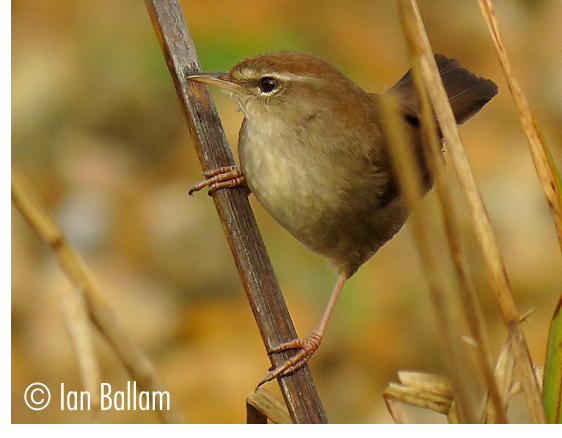
Chaffinch
Latin Name
Fringilla coelebs
Status
Resident
Site And Records Information
Breeds right across the harbour in urban and rural areas. Large numbers can be viewed during visible migration watches at South Haven, Ballard and Glebelands. Large winter flocks of up to 300 birds have been recorded at places such as Arne, Swineham and Soldiers Road.
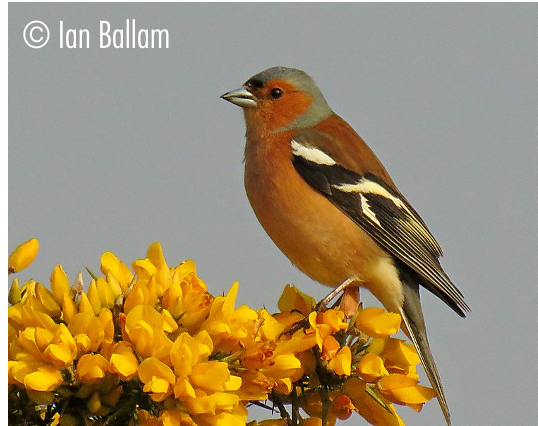
Chiffchaff
Latin Name
Phylloscopus collybita
Status
Common summer breeding resident, passage migrant and winter visitor
Site And Records Information
Found right across the harbour during the breeding season. Any woodland habitat will hold good numbers of breeding Chiffchaff. Passes through in large numbers on autumn migration during Sept-Oct. Winters in mild sheltered areas with available food such as Swineham GP and at the PC World Drain, Holes Bay.
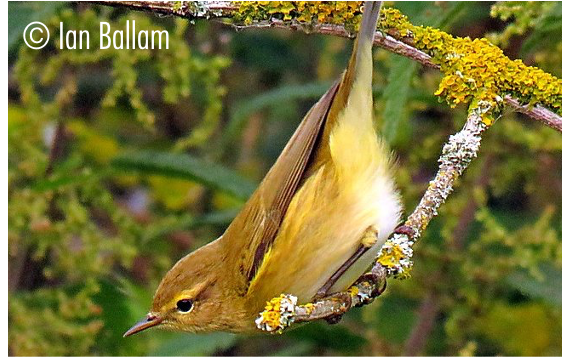
Chough
Latin Name
Pyrrhocorax pyrrhocorax
Status
Former Breeding Species, No Recent Records
Site And Records Information
Future records are not impossible. In 2001 there were a series of records in the Portland/Weymouth area and in 2003 one spent 4 days at St Aldhelm’s Head in Purbeck.
Cirl Bunting
Latin Name
Emberiza hortulana
Status
Former Breeding Species, No Recent Records
Site And Records Information
Used to breed widely across Dorset. Declined dramatically from early 50’s to its extinction around 1974. Was still breeding in the harbour in 1968 with the last singing males at Scotland Farm and Greenland’s Farm in March 1968. No harbour records since, however with populations growing just next door in Devon we can at least dream of seeing see this stunning bird back one day. West Dorset recently experienced a mini influx.
Coal Tit
Latin Name
Periparus ater
Status
Resident
Site And Records Information
This bird loves conifer plantations, of which Poole Harbour has plenty. Breeds throughout the area. Can often be seen feeding with Goldcrest in autumn and winter. Numbers occasionally swell with continental arrivals during late autumn.
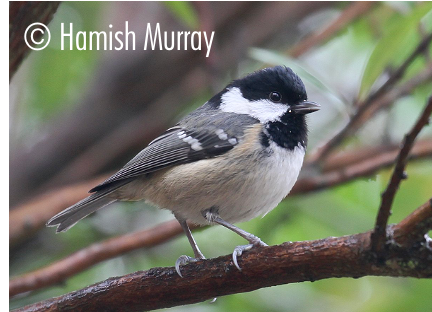
Collared Dove
Latin Name
Streptopelia decaocto
Status
Resident
Site And Records Information
Breeds in rural and urban areas around the harbour, and very common in parks and gardens. Large flocks have occurred with 57 at Poole Park on 24th October 2004.
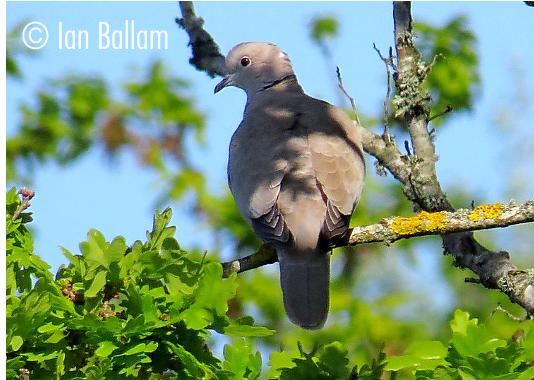
Collared Pratincole
Latin Name
Glareola pratincola
Status
Vagrant
Site And Records Information
Pratincole are exceptionally rare in Dorset and not much commoner across the UK. Collared, Black-winged and Oriental Pratincole have all been recorded in the UK but only Collared has been recorded in Poole Harbour with just 1 record.
1 on 24th May 1977 at Holes Bay – H A Lilley. Incidentley, 5 others were seen within 2 weeks in Britain including one at Lodmoor seen by Martin Cade on 7th June 1977.
Common Crane
Latin Name
Grus grus
Status
Vagrant
Site And Records Information
With populations increasing in eastern and central-southern England it’s no surprise we’re seeing more records of Common Crane in the harbour in recent years. A lovely early account came from Studland whilst showing the Weymouth Grammar School YOC group round Brands Bay on 2nd December 1978 one of the pupils asked Studland warden Rees Cox the identity of six Cranes that flew into Greenlands Farm and alighted in the fields. According to Rees, the birds “alighted and fed in the fields by Brands Bay.”
1 on 16th Aug 1975 at Lytchett Bay
6 on 2nd Dec 1978 at Brands Bay
1 19th & 22nd Sep and 3rd & 10th Oct 1999 at Lytchett Bay (S.Robson et al)
1 on 13th Oct 2004 on the Brownsea Lagoon (many observers)
Recent records
2014
3 on 11th Apr 2014 over Stoborough (N.Hopper)
2016
Holton Lee 2 on 5th Mar (P Morton).
2017
Arne RSPB 1 occasionally between 31st May and 5th Jun. This bird was a colour-ringed individual from Somerset in 2012.
2018
Arne RSPB 2 birds which were seen and heard 24th-26th Sep had been seen to arrive over the chain ferry at South Haven on 24th Sep.
2019
Poole Harbour 1 adult frequented the Hartland Moor/Arne RSPB/Middlebere area between 8th & 28th Jan. (JR Mitchell et al). What was presumably the same bird was seen over Swyre Head on 17th Jan and Durlston CP on 20th Jan. Although it was seen to be un-ringed, its origins are unknown, as not all those from the reintroduction scheme carry rings. 1 flew down the Piddle Valley and the Wareham Channel on 16th May (P Hadrill), with another at Keysworth on 17th Sep P Hadrill) and in Lytchett Bay on 28th Sep (ID Ballam).
2020
Wareham 1 over on 2nd Mar (Bob Ford).
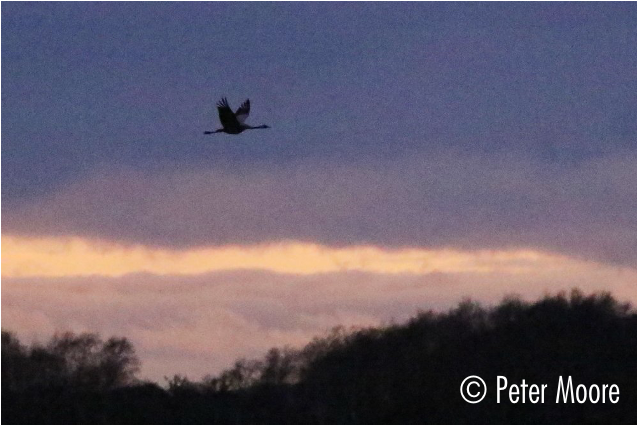
Call 01202 641 003
© 2024 Birds of Poole Harbour Registered Charity No. 1152615

